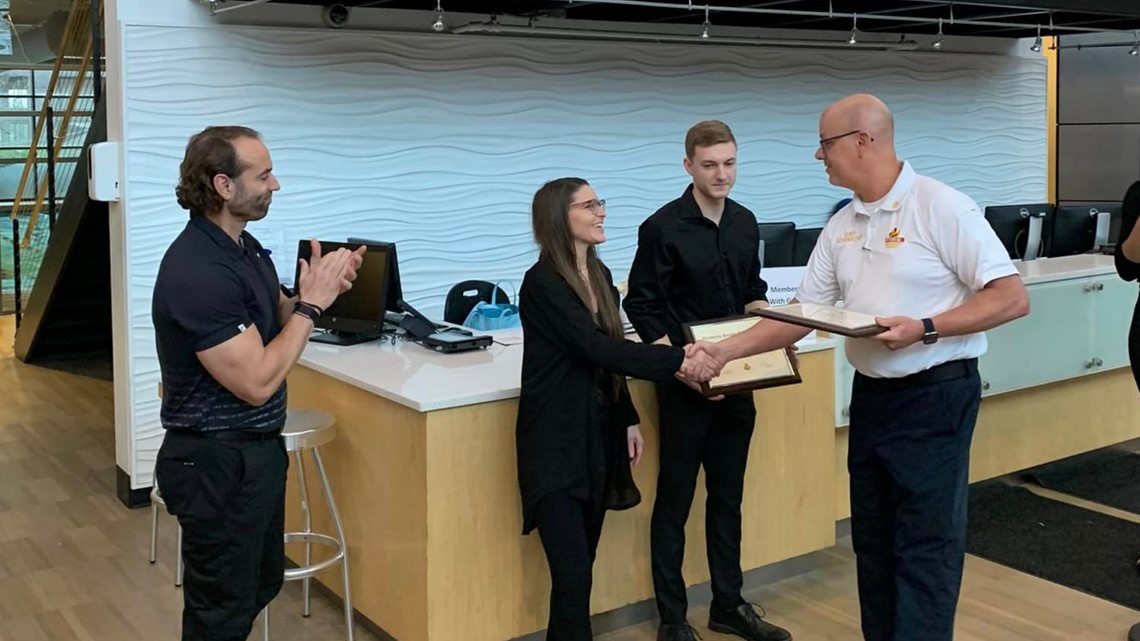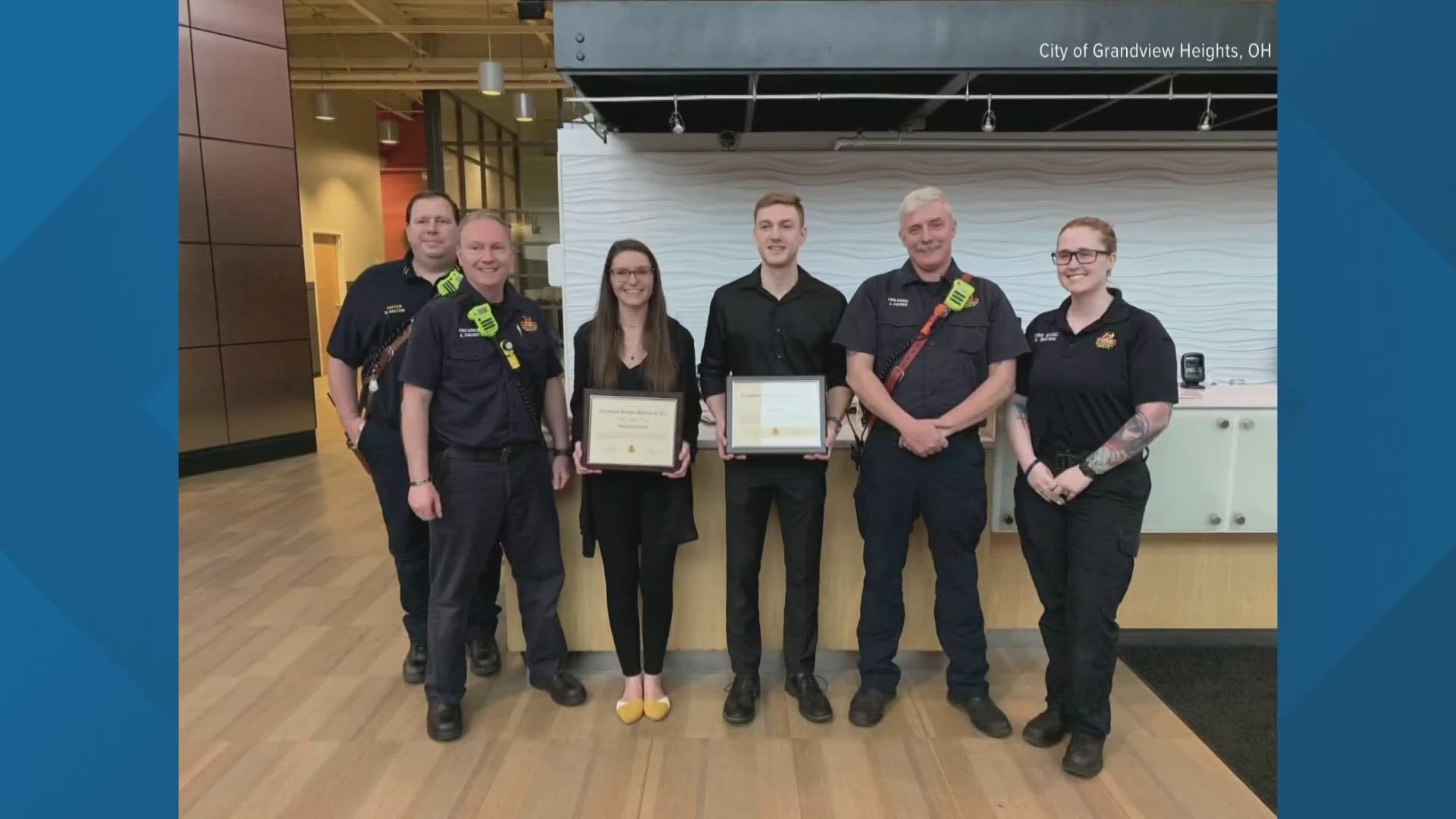COLUMBUS, Ohio — Two employees at the Esporta Fitness in Grandview are being credited with saving someone’s life after they entered full cardiac arrest in February.
Taylor Ouellette and Kevin Helt were recognized by both the Grandview Heights Fire Department and staff from The Ohio State University Wexner Medical Center on Wednesday.
According to the City of Grandview Heights, the two employees performed life-saving efforts on a gym patron who was in cardiac arrest on Feb. 10.
Before emergency crews arrived at the gym on Goodale Boulevard, Ouellette and Helt had begun chest compressions and used an AED device that was nearby. Once the crews arrived, they took over care of the patron and the run had a positive outcome.
“We are grateful for their willingness to jump into action,” a spokesperson for the city wrote. “The importance of bystander CPR cannot be understated, and we saw it firsthand on this run. We encourage everyone to seek out CPR training if they are not already certified because it can truly save a life.”


Daniel Bachmann, professor of emergency medicine at The Ohio State University Wexner Medical Center and director of disaster preparedness at the hospital, said that things were done in an excellent fashion for the patient.
“One of the things that I told those two employees who were recognized is that what they did was really no different than what millions of people watched on television with Damar Hamlin," Bachmann said. "The reason why this person’s heart stopped may have been different, but they saved his life and I’m glad they were recognized."
He provided a few tips on how you can respond when someone is showing symptoms of a heart attack:
1. Take it seriously
“In this case, the people working immediately when they recognized that there was a patron in distress started taking action.”
2. Call for help
“Even if you’re a doctor or nurse, you’re still not going to be prepared to do everything, and ultimately for someone whose heart or breathing has stopped, they definitely need a higher level of care in a hospital… Know how to get your paramedics and your EMS system activated.”
That being said, Bachmann said there are still some simple things that can be done to make a huge difference for those that have the proper training.
"In this case, they started chest compressions, and they got the automated external defibrillator, which most people probably know as the AED. That’s a device very easy to use that walks you through how to use it," Bachmann said. "In this case, it was able to deliver a shock to the patient and get his heart restarted. It’s simple things that require a little bit of training. Taking a class in CPR usually includes how to use one of those machines."
3. Have awareness
“The people working at this gym knew where that machine was located, knew where some of the items were that they would need to attend to this person. Even if you’re in a public place, it’s good just to pay attention to where that AED is hanging on the wall [and] where things like the fire alarm is.”
The Wexner Medical Center also provided the following resources that could help someone who may be having a heart attack:
If the person having the heart attack is unconscious, isn’t breathing and has no pulse, CPR can help while waiting for the ambulance. A 911 dispatcher is able to talk through performing CPR, but you can also learn about hands-only CPR or find a CPR class to be better prepared. Here’s where you can find a CPR class through the American Heart Association.
If available, a defibrillator, or AED, is even more useful. Step-by-step instructions are available on the American Red Cross website.

